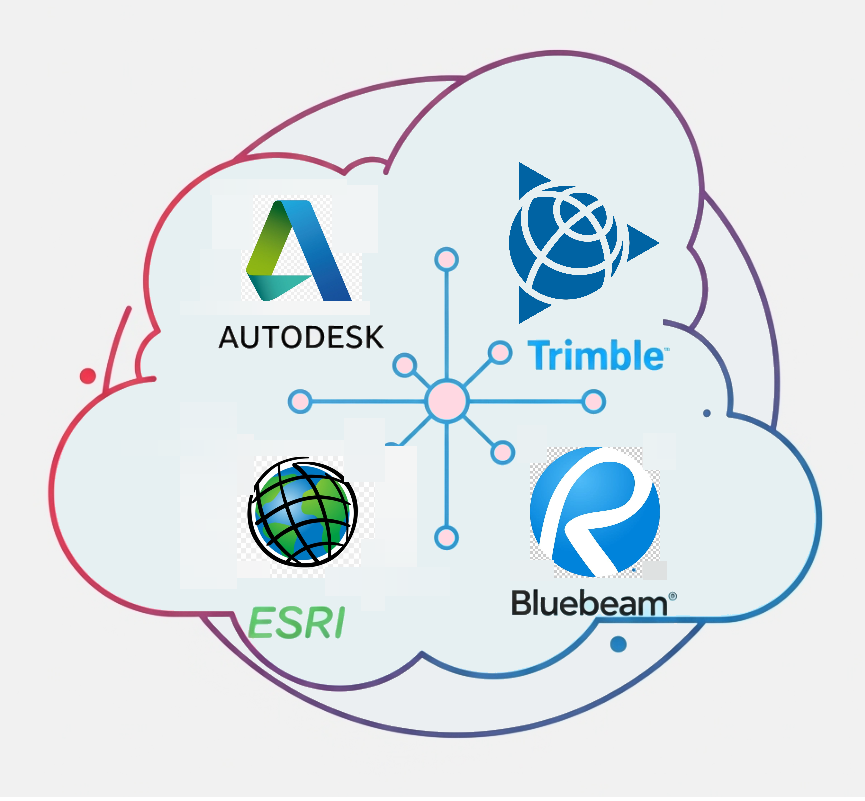Hey everyone, it’s your friendly neighborhood application engineer here! I just had to share a glimpse into our team’s latest virtual “water cooler” chat. This wasn’t your typical status meeting; it was a burst of creative energy as our AECO dream team – that’s Architecture, Engineering, Construction, and Operations, for those not in the know – started brainstorming about the future. The topic? How our favorite software platforms, armed with their new AI superpowers, can finally talk to each other and kick waste and rework to the curb.
The “chat log” below is a slightly dramatized, highly enthusiastic version of our conversation. Names have been changed to protect the (very intelligent and witty) innocent.

Alex (Architect): “Okay, seriously, I just used the new Generative Design feature in Autodesk Revit to optimize the building layout for daylighting. It ran hundreds of options in minutes. This is a game-changer. No more endless manual iterations.”
Becca (Structural Engineer): “Right? And my structural analysis in Trimble’s Tekla Structures can now automatically suggest steel beam placements that are more efficient and clash-free, based on Alex’s updated model. The AI is practically doing the initial coordination for me. It’s like having a hyper-caffeinated intern who never sleeps.”
Leo (GIS Specialist): “That’s cool, but what’s even better is that my ESRI ArcGIS is now ingesting both of your models. The AI is analyzing the local climate data, flood zones, and even traffic flow to predict long-term operational impacts. It’s suggesting where to place our stormwater retention ponds for maximum effectiveness. We’re designing for resilience from day one, not as an afterthought!”
Alex: “So, if I’m hearing this right… I could potentially get a prompt in Revit from Leo’s GIS data, telling me that a certain corner of the building is in a high-wind zone and I should adjust my facade design before I even send the model to Becca? That’s what I’m talking about!”
Becca: “And I could get a heads-up from the same data to check for soil liquefaction risks in my foundation design, all integrated into Tekla. This is the definition of ‘front-loading’ the project. We’re eliminating problems before they’re even drafted.”
Chris (Construction Manager): “Alright, alright, hold my coffee. This is where my team and I come in. So now that you three have a beautifully coordinated, AI-vetted model, we get the digital twin. My team can use Trimble Connect and link it directly to our field tools. The AI can analyze the model and our construction schedule to predict potential bottlenecks. It’s like having a crystal ball for our build plan.”
Becca: “And what about the constant back-and-forth on RFIs?”
Chris: “That’s where Bluebeam’s Studio and its new AI come in. Let’s say we’re reviewing a submittal. The AI can scan the drawings, specs, and the 3D model, and automatically flag potential conflicts or missing information. It can even suggest a likely solution based on our project history. No more sifting through hundreds of pages of PDFs. A five-day RFI turnaround becomes a five-minute discussion.”
Leo: “And since all these systems are talking to each other, a redline from Chris in Bluebeam could trigger an alert in Revit for Alex and a task in Tekla for Becca, all without us having to email, screenshot, or even type a description. The context is already there!”
The Big Takeaway:
Our conversation wasn’t just a fantasy; it’s a peek into the very near future of the AECO industry. By letting the AI in Autodesk, Trimble, ESRI, and Bluebeam act as a universal translator between our disciplines, we’re not just saving time. We’re building better, more resilient, and more efficient projects with significantly less stress and wasted effort.
So, the next time you see us huddled around our screens, just know we’re not just looking at a project; we’re orchestrating a symphony of data, where every note from our different software platforms is in perfect harmony, all thanks to a little help from our AI friends. And that, my friends, is the sound of progress.


Leave A Comment